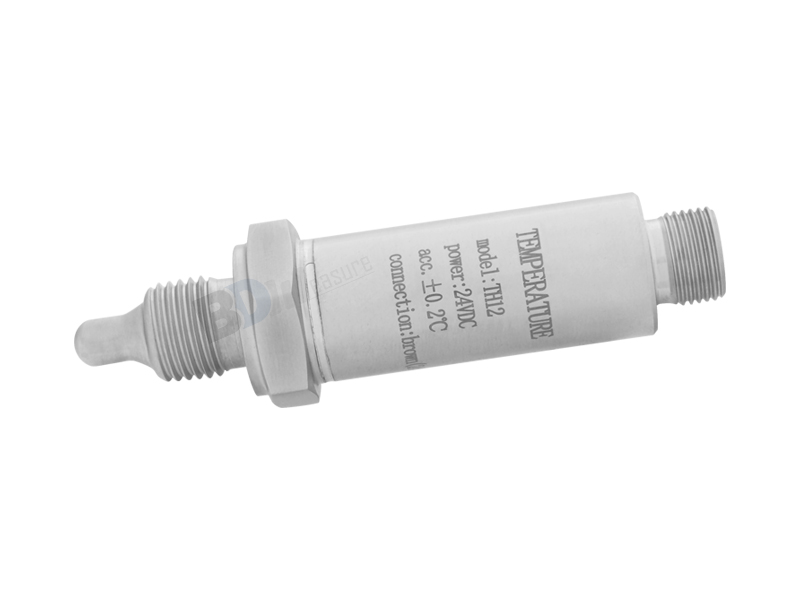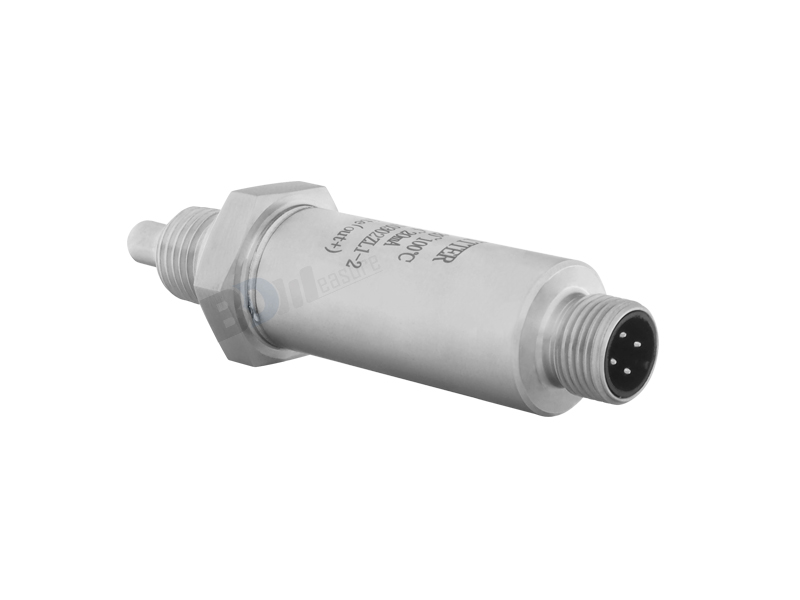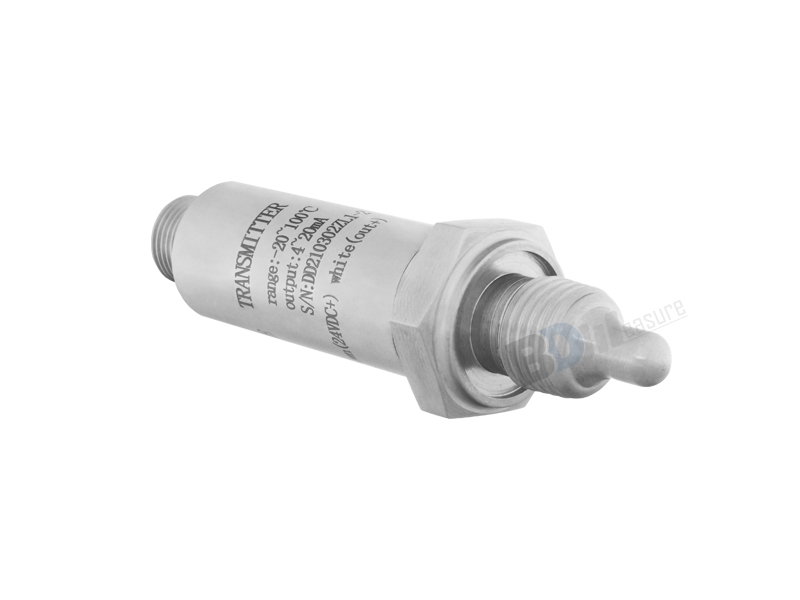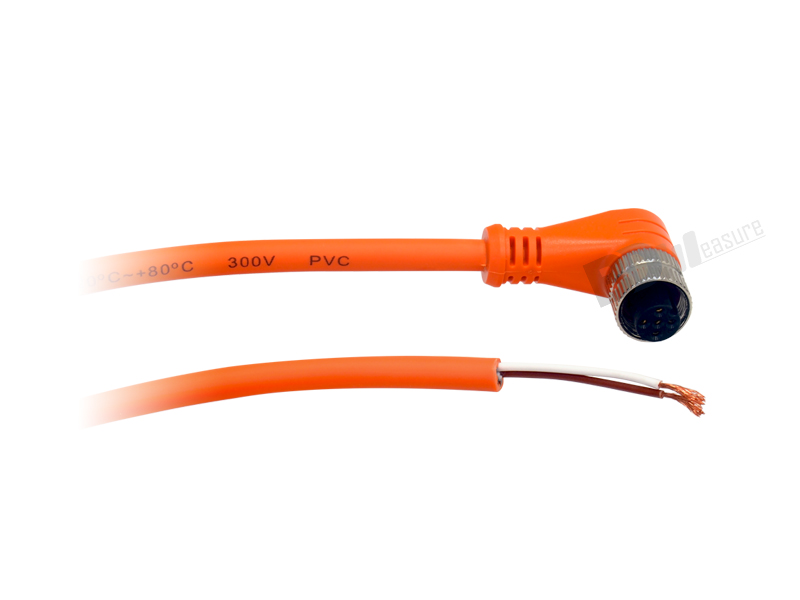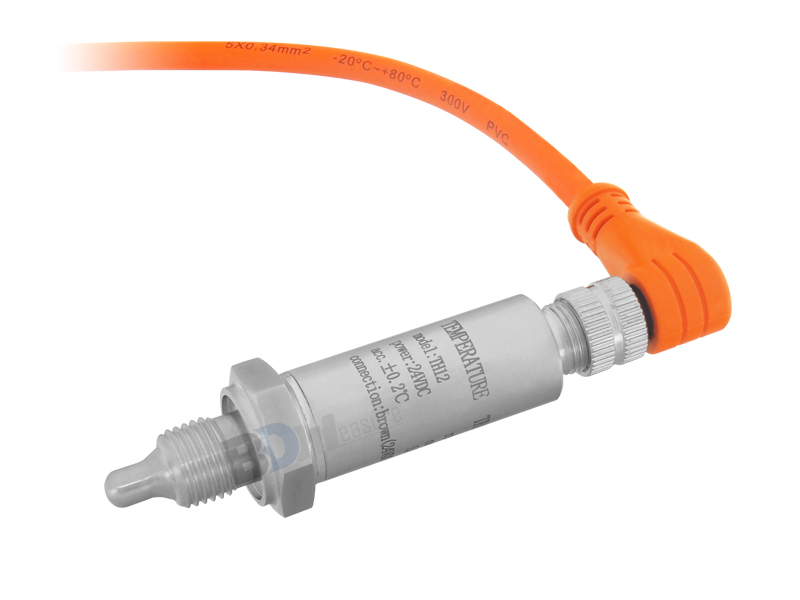- Home
- Products
- Temperature & Humidity
- Temperature Sensor
- Temperature Sensor (RTD, Pt100, 4-20mA) (BDTH01-01)
Temperature Sensor (RTD, Pt100, 4-20mA)
Pt100 temperature sensors are designed with the purpose of measuring temperature for various types of applications, such as food processing, pharmaceutical industries and air conditioning systems. They can measure a change in temperature for gases or liquids and provide reliable results by using the relationship between the resistance and temperature.
BDTH01-01 RTD Sensor (Pt100)
- Electrical resistance of platinum
- Offer high stability
- Contact type transmitter designed for temperature sensing
Temperature transducers are electrical devices that used to accurately detect temperature and convert the measurable values into output signals. Monitoring temperature in an object or environment is important to maintain the temperature within the target range.
Temperature plays a key role in a variety of applications such as industrial controls. Different industrial applications manufacturing processes have different temperature sensing requirements. If you do not control the temperature, it can result in serious consequences such as reducing the lifetime of manufacturing equipment. Therefore, measuring temperature for your systems or facilities is necessary. Temperature sensors can perform efficiently when measuring temperature in liquid and gaseous media.
Our BDTH01-01 temperature sensor is a precise instrument in a miniature and lightweight design for applications where a small probe is required. It provides not only consistent and measurable results but also high accuracy and stability. It is a device that measures the degree of heat or coldness which is generated by an object or system, allowing users to detect changes in temperature. Depending on different customer needs, a variety of probe lengths and process connections are available, providing application flexibility.
| Process Media | All liquids and gases which are compatible with 304 stainless steel |
| Maximum Measuring Range | -50 to 250°C |
| Accuracy | ±0.2°C |
| Influence of Temperature | 0.005% FS/℃ |
| Output | 4…20mA, two-wire / PT100 (on request) |
| Supply Voltage | 24VDC |
| Response Time | 1 sec |
| Ambient Temperature Range | -40 to 80°C |
| Probe Length | 10mm (others on request) |
| Probe Diameter | 6mm (others on request) |
| Process Connection | G1/4 , M20x1.5 (others on request) |
| Housing Material | 304 stainless steel |
| Electrical Connection | M12, 4 pin |
| Housing Protection | IP65 |
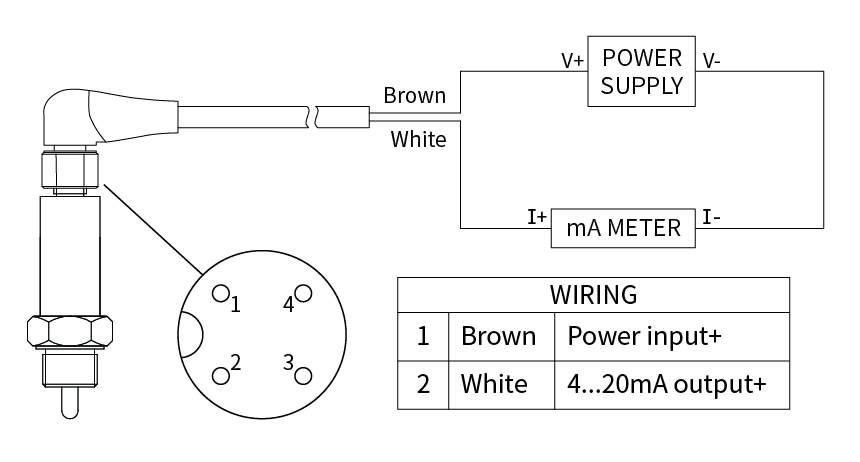
Temperature is one of the important physical parameters to determine equipment reliability and product quality. People usually use temperature sensors to control their required temperature across various industries. Compressed air systems, for example, commonly need to use temperature sensors and hygrometers to effectively control temperature, humidity, or dew point because these factors can affect the quality of processes and final products.
Temperature sensors have two primary types: one is contact temperature sensors; the other is non-contact temperature sensors. The former require to be in physical contact with the medium, and the latter do not. There are a wide variety of temperature sensors that are commonly used, including resistance temperature detector, thermocouples, thermistors, IC temperature transducers, and infrared temperature sensors.
Resistance temperature detector (RTD), for example, is a contact temperature sensor. It has positive temperature coefficients (PTC) which means the resistance value goes up with increasing temperature, and vice versa. Unlike the thermistor, RTD has a nearly linear output producing high accurate temperature measurement. Resistance temperature detectors, also called resistance thermometers, are popular devices to measure temperature by sensing electrical resistance in many industrial processes. Although there are other conducting metals, such as copper, used as resistor elements, platinum is the most common material used in an RTD because of several reasons such as chemical inertness, temperature coefficient of resistance, and nearly linear resistance versus temperature gradient. Because the resistive element is fragile, it is usually housed inside a protective probe. The operation principle of platinum resistance thermometers is based on measuring the resistance of a platinum element. The most common specification of RTD is 100 ohms, which means it demonstrates the 100 ohms resistance at 0°C. Temperature sensor is a transmitter that measures hotness and coolness and transforms measurable values into electrical signals, so it can provide input to a system in order to accurately measure the temperature of object or environment.
Selecting a useful sensor for determining process temperature is important consideration. If you need an accurate and stable temperature measurement, our BDTH01-01 temperature sensor will be a suitable device because it is not only effective in sensing temperature of gases and liquids but also provides reliable measurement data compatible with PLCs, or digital panel meters, etc.

